Climate Change Impacts on Health
Overview
Health is key to our well-being, happiness, and general quality of life. It is also important for economic progress and productivity. A person’s health may depend on many factors, such as their income, race, gender, age, existing medical conditions or genetics, occupation, and where they live.1 Personal choices and social support structures also play a role in a person’s health.
Climate change also affects people’s health in many ways. As the climate changes, more people may be exposed to extreme weather like heat, floods, droughts, storms, and wildfires.2 These events can cause illness, injury, and even death. Climate change can also lead to more diseases spread by insects and ticks, and it can affect the quality and safety of air, water, and food, including through the spread of harmful bacteria or viruses.3 In addition, hazards related to climate change can stress people’s mental health.4 For information on how climate change can affect the health of different groups of people, see Climate Change and Health.
-
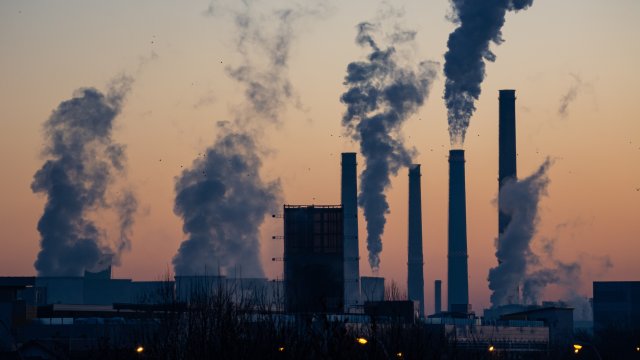
Worse air quality. Climate change is expected to worsen air pollution, which can pose health risks like heart and lung diseases.44 Low-income households and people of color often already live near factories, ports, and major roadways that emit air pollutants and make them more vulnerable.45
-
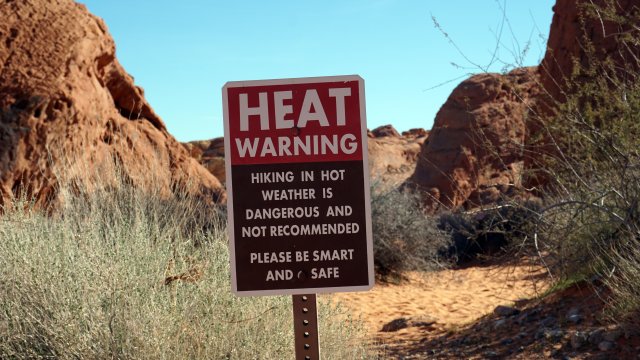
Increases in heat-related illnesses. Extreme heat is already the leading cause of weather-related deaths in the United States.46 As temperatures rise with climate change, heat waves are expected to become more frequent and more intense.47
-
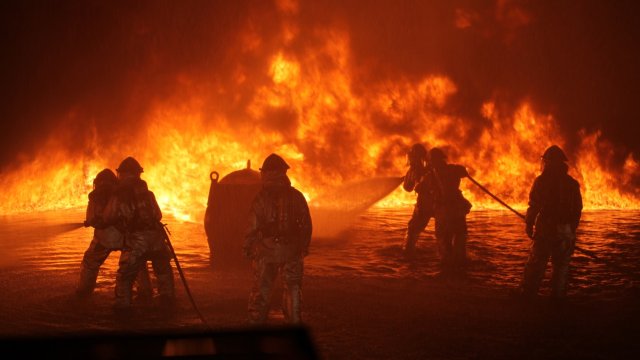
Increases in mental health effects. About 30% of all first responders develop depression, anxiety, or post-traumatic stress disorder after responding to a natural disaster or extreme weather event.48 Climate change is increasing the frequency and/or intensity of some of these events, putting more first responders at risk.49
-
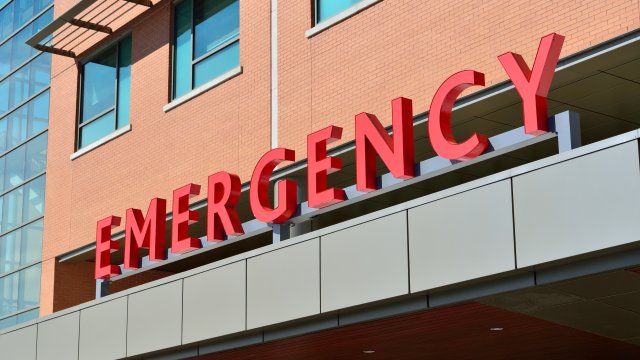
Difficulty accessing health care. In some places—such as certain rural areas—people can have trouble getting health care since there are fewer providers and transportation options.50 Extreme weather worsened by climate change, like floods and storms, can make it even harder for people to access medical facilities.
-
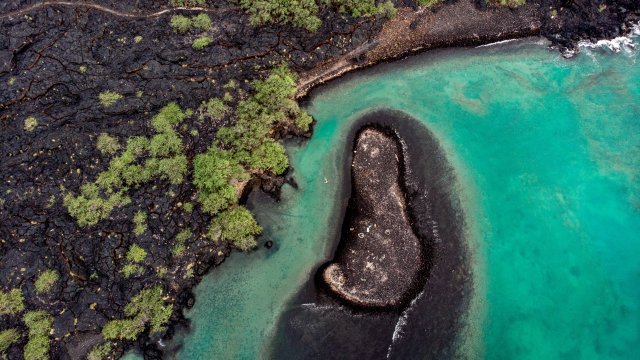
Impacts on safe drinking water. As the climate changes, sea levels are rising in some areas. Pacific island communities are already experiencing saltwater contamination of groundwater systems due to sea level rise.51
While the health effects of a changing climate are wide-ranging, communities, health care providers, and individuals can all take steps to lessen these impacts. For example, many government agencies already use the national public warning system to communicate extreme weather threats. Some hospitals are climate-proofing their buildings and becoming more energy efficient. Many cities and individuals are planting trees to reduce the impacts of heat on people’s health.
Explore the sections on this page to learn more about climate impacts on health:
- Top Climate Impacts on Health
- Health and the Economy
- Environmental Justice and Equity
- What We Can Do
- Related Resources
Top Climate Impacts on Health
Health impacts from climate change vary depending on factors like a person’s age, medical condition, income, and where they live. Four key impacts are described in this section.
1. Threats to Safety and Health from Extreme Weather
As the climate changes, some extreme weather events are becoming more frequent and/or intense, posing risks to people’s health and safety. For instance, droughts can create dust, which can lead to respiratory illness.6 Storms and floods can cause injuries, damage to homes and buildings, and infections from contaminated water.7 Weather can also keep people from getting to doctor’s offices and emergency care.8 Disrupted services are a particular risk for those who need regular medical care, such as older adults, pregnant women, infants, children, or people with chronic illnesses.
Temperatures are also likely to rise in many places as the climate changes. Exposure to extreme or prolonged heat can cause exhaustion, heat stroke, kidney and heart disease, and pregnancy complications.9,10 In fact, extreme heat is already the leading cause of weather-related deaths in the United States.11
2. Threats to Water, Food, and Air Quality
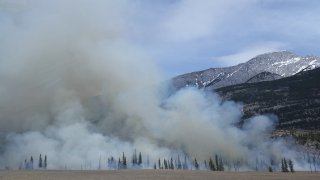
Extreme weather and heat caused by a changing climate affects the quality of water, food, and air. Rising temperatures can lead to harmful algal blooms, many of which produce toxins that make people sick.12 Increased rainfall, storms, and flooding can contaminate water resources with viruses and bacteria, causing gastrointestinal and other illnesses.13 Rising temperatures also contribute to drought and reduced snowpack, ultimately reducing the availability of certain drinking water supplies.14
Climate change impacts on food vary widely. Longer growing seasons may be helpful for some crops, but detrimental to others. Taken together, these changes will present added challenges to farmers looking to plant successful crops that sustain their livelihood. A warmer climate may also lead to more pests or limit the types of crops that can grow in an area.15 This may make it harder for some people to access safe, nutritious food. In addition, climate change may increase people’s exposure to certain bacteria that can cause illnesses, such as Salmonella or E. coli.16
Climate-related extreme weather and heat can worsen air quality. Wildfires and dust from droughts can increase outdoor air pollution.17 Hot weather can increase ground-level ozone.18 Bacteria and mold from flooding can lead to pollutants indoors.19 Poor air quality poses human health risks, including heart disease and stroke, asthma and other respiratory diseases, pregnancy complications, and some cancers.20,21
3. Insect- and Tick-Related Diseases
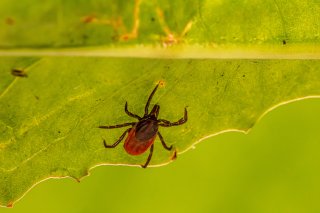
Warmer temperatures are contributing to the expansion of the range where ticks can live.22 Ticks can carry the bacteria that causes Lyme disease, which can cause long-term illness if not treated properly.23 Over the last 20 years, the incidence of Lyme disease and other tick-borne diseases has increased due to multiple factors, including climate change.24
Warmer temperatures also create conditions that help mosquitoes thrive. For example, among several factors that can affect West Nile virus transmission, mild winters, which may be more frequent due to climate change, have been linked to outbreaks of the disease.25
4. Threats to Mental Health and Well-Being
Both immediate and long-term climate change effects can contribute to mental health challenges, including depression, anxiety, and post-traumatic stress. For instance, climate-related natural disasters can be traumatic, especially for children.26 Natural disasters can lead to a loss of stability, community, and sometimes one’s home or property. Households that experience floods report higher levels of anxiety and depression, sometimes for years afterwards.27 Natural disasters and droughts can also lead to more tobacco and alcohol use, as well as domestic violence.28,29 In addition, heat overall has been linked to increases in violence.30
For more specific examples of climate change impacts in your region, please see the National Climate Assessment.
Health and the Economy

Compromised health conditions—both short- and long-term—can pose major costs to people, communities, and businesses. These illnesses can hinder economic growth and limit people’s opportunities to work, attend school, and maintain their social relationships.31
Physical and mental health conditions can make it harder for people to do their jobs and can lead to missed workdays and lost wages.32 Missed workdays due to chronic medical conditions cost U.S. employers billions of dollars every year.33
Environmental Justice and Equity

Some people will be more affected by climate change than others because of social and economic factors. For instance, low-income households may live in aging or poorly constructed buildings that lack adequate cooling during heat waves.36 These households may also struggle to prepare for and recover from storms, floods, and other climate-related disasters.37 Those with limited financial resources also may lack adequate health insurance or access to health care.
For Indigenous, Pacific Islander, and Alaska Native communities, a changing climate might threaten traditional crops or other food sources.38 This could cause food insecurity and mental health impacts for some people in these communities.
In Alaska, thawing permafrost affects the structure of grounds and roads, which can lead to injuries and community displacement for Tribe members.39 Tribes in remote or rural areas may also have less access to clean, safe water as climate impacts, such as flooding, increase.40
Some groups, like immigrants and communities of color, may face discrimination, language barriers, and other obstacles that can exclude them from community planning processes. As a result, their neighborhoods may be less prepared for climate change.41 They may also have a harder time accessing information to help them become more resilient. At the same time, minority communities may be at higher risk of certain chronic illnesses, such as asthma or heart disease.42 Climate change effects, like poor air quality and increased heat, can worsen these illnesses.
People with chronic illnesses or disabilities may experience disruptions to their medical care during weather emergencies. In addition, alerts and instructions may not be accessible for people with certain disabilities, such as hearing loss, vision loss, or some cognitive disabilities. People with limited mobility may also have a harder time getting to safety or accessing medical care.43
What We Can Do

Health care facilities, communities, and individuals can reduce climate change’s impacts on human health in many ways. Some actions include:
- Use clean energy in health care facilities. Investing in clean energy can help hospitals become more resilient and cost-efficient in the face of climate change. Clean energy also helps reduce greenhouse gases that cause climate change.
- Seek medical care. Talk to your health care provider if you think your health is being affected by climate change or your local environment.
- Get to know your community. Partner with local organizations and create a community-based approach to prepare for, respond to, and recover from extreme weather events.
- Learn about local waterways. Check out the condition of water bodies near your home to see if they are safe for swimming.
- Go for the green. Green roofs, greenways, trees, and other green infrastructure all help reduce the urban heat island effect and absorb rainwater to prevent flooding. They also provide benefits like improved air quality and habitat for wildlife.
- Protect against insects and ticks. Where possible, wear long pants and sleeves outdoors, and use an EPA-approved bug repellant. Check where outbreaks of Lyme disease and West Nile virus are happening nearby (or in places you’re about to travel to).
- Improve indoor air quality. Reduce or remove sources of indoor air pollutants whenever possible. For example, consider using portable air purifiers or high-efficiency filters in your heating, ventilation, and air conditioning systems.
Related Resources
- Fifth National Climate Assessment, Chapter 15: “Human Health.”
- Climate Change Indicators in the United States: Health and Society.
- Centers for Disease Control and Prevention (CDC). Provides information to help protect people from health threats, including heat, extreme weather, and flooding.
- Heat.Gov. Consolidates all federal resources that present information, tools, or strategies on managing heat-related illnesses.
- AirNow Air Quality Index. Offers daily information on how clean or polluted your outdoor air is, along with associated health impacts that may be of concern.
- National Oceanic and Atmospheric Administration (NOAA), National Weather Service. Provides weather forecasts and other resources to promote public safety.
- Ready.gov. A national campaign that presents information to help people prepare for and respond to extreme weather events and natural disasters.
- National Institute of Environmental Health Sciences: Climate Change. Offers research and resources on how climate change affects people’s health.
- Environmental Justice Grants and Resources. Supports and empower communities in solving local environmental and/or public health issues.
Endnotes
1 Ebi, K.L., et al. (2018). Ch. 14: Human health. In: Impacts, risks, and adaptation in the United States: Fourth national climate assessment, volume II. U.S. Global Change Research Program, Washington, DC, p. 541.
2 U.S. Environmental Protection Agency (EPA). (2021). Understanding the connections between climate change and human health. Retrieved 1/21/2022.
3 Hayden, M. H., et al. (2023). Ch. 15: Human health. Fifth National Climate Assessment. U.S. Global Change Research Program, Washington, DC, p. 15-9.
4 Hayden, M. H., et al. (2023). Ch. 15: Human health. Fifth National Climate Assessment. U.S. Global Change Research Program, Washington, DC, p. 15-6.
5 Intergovernmental Panel on Climate Change (IPCC). (2021). Ch. 11: Weather and climate extreme events in a changing climate. In: Climate change 2021: The physical science basis. Contribution of Working Group 1 to the Sixth Assessment Report of the IPCC. Cambridge University Press. In press, p. 11-6.
6 Ebi, K.L., et al. (2018). Ch. 14: Human health. In: Impacts, risks, and adaptation in the United States: Fourth national climate assessment, volume II. U.S. Global Change Research Program, Washington, DC, p. 544.
7 EPA. (2021). Understanding the connections between climate change and human health. Retrieved 3/22/2022.
8 Hayden, M. H., et al. (2023). Ch. 15: Human health. Fifth National Climate Assessment. U.S. Global Change Research Program, Washington, DC, p. 15-14.
9 Hayden, M. H., et al. (2023). Ch. 15: Human health. Fifth National Climate Assessment. U.S. Global Change Research Program, Washington, DC, p.15-6.
10 Sarofim, M. et al (2016). Ch. 2: Temperature-Related Death and Illness. The Impacts of Climate Change on Human Health in the United States: A Scientific Assessment. U.S. Global Change Research Program, Washington, DC, p. 50.
11 NOAA (National Oceanic and Atmospheric Administration). (2023). Weather related fatality and injury statistics. Retrieved 1/3/2025 from www.weather.gov/hazstat
12 CDC. (2021). Harmful algal bloom (HAB)-associated illness. Retrieved 3/22/2022.
13 Ebi, K.L., et al. (2018). Ch. 14: Human health. In: Impacts, risks, and adaptation in the United States: Fourth national climate assessment, volume II. U.S. Global Change Research Program, Washington, DC, p. 546.
14 Lall, U., et al. (2018). Ch. 3: Water. In: Impacts, risks, and adaptation in the United States: Fourth national climate assessment, volume II. U.S. Global Change Research Program, Washington, DC, p. 150.
15 EPA. (2021). Climate change indicators: Length of growing season. Retrieved 1/21/2022.
16 Ziska, L., et al. (2016). Ch. 7: Food safety, nutrition, and distribution. In: The impacts of climate change on human health in the United States: A scientific assessment. U.S. Global Change Research Program, Washington, DC, p. 194.
17 West, J.J., et al. (2023). Ch. 14: Air quality. Fifth National Climate Assessment. U.S. Global Change Research Program, Washington, DC, p. 14-5.
18 Nolte, C.G., et al. (2018). Ch. 13: Air quality. In: Impacts, risks, and adaptation in the United States: Fourth national climate assessment, volume II. U.S. Global Change Research Program, Washington, DC, p. 516.
19 EPA. (2021). Indoor air quality and climate change. Retrieved 3/22/2022.
20 EPA. (2021). Indoor air quality. Retrieved 3/22/2022.
21 Nolte, C.G., et al. (2018). Ch. 13: Air quality. In: Impacts, risks, and adaptation in the United States: Fourth national climate assessment, volume II. U.S. Global Change Research Program, Washington, DC, pp. 516–518.
22 Retrieved 1/3/2025. Beard, C. B., Eisen, R. J., Barker, C. M., Garofalo, J. F., Hahn, M., Hayden, M., Monaghan, A. J., Ogden, N. H., & Schramm, P. J. (2016). Chapter 5: Vectorborne diseases. In USGCRP (U.S. Global Change Research Program), The impacts of climate change on human health in the United States: A scientific assessment. https://health2016.globalchange.gov/vectorborne-diseases
23 CDC. (2024). Signs and symptoms of untreated Lyme disease. Retrieved 1/2/2025.
24 Hayden, M. H., et al. (2023). Ch. 15: Human health. Fifth National Climate Assessment. U.S. Global Change Research Program, Washington, DC, p. 15-8.
25 EPA. (2021). Climate change indicators: West Nile virus. Retrieved 3/22/2022.
26 Gamble, J.L., et al. (2016). Ch. 9: Populations of concern. In: The impacts of climate change on human health in the United States: A scientific assessment. U.S. Global Change Research Program, Washington, DC, p. 255.
27 Ebi, K.L., et al. (2018). Ch. 14: Human health. In: Impacts, risks, and adaptation in the United States: Fourth national climate assessment, volume II. U.S. Global Change Research Program, Washington, DC, p. 546.
28 Ebi, K.L., et al. (2018). Ch. 14: Human health. In: Impacts, risks, and adaptation in the United States: Fourth national climate assessment, volume II. U.S. Global Change Research Program, Washington, DC, p. 546.
29 Gearhart, S., et al. (2018). The impact of natural disasters on domestic violence: An analysis of reports of simple assault in Florida (1999–2007). Violence and Gender, 5, 87–92.
30 Hayden, M. H., et al. (2023). Ch. 15: Human health. Fifth National Climate Assessment. U.S. Global Change Research Program, Washington, DC, p. 15-10.
31 U.S. Department of Health and Human Services. (2021). Community health and economic prosperity: Engaging businesses as stewards and stakeholders—A report of the Surgeon General (pdf). Atlanta, GA: U.S. Department of Health and Human Services, Centers for Disease Control and Prevention, Office of the Associate Director for Policy and Strategy, p. xvii.
32 Asay G.R.B., et al. (2016). Absenteeism and employer costs associated with chronic diseases and health risk factors in the U.S. workforce. Prev. Chronic Dis. (13)150503.
33 Asay G.R.B., et al. (2016). Absenteeism and employer costs associated with chronic diseases and health risk factors in the U.S. workforce. Prev. Chronic Dis. (13)150503.
34 Centers for Disease Control and Prevention (CDC). (2024). Fast facts: health and economic costs of chronic conditions. Retrieved 7/23/2024.
35 National Institute of Environmental Health Sciences. Heart Disease. Retrieved 11/30/2022.
36 Ebi, K.L., et al. (2018). Ch. 14: Human health. In: Impacts, risks, and adaptation in the United States: Fourth national climate assessment, volume II. U.S. Global Change Research Program, Washington, DC, p. 548.
37 Ebi, K.L., et al. (2018). Ch. 14: Human health. In: Impacts, risks, and adaptation in the United States: Fourth national climate assessment, volume II. U.S. Global Change Research Program, Washington, DC, p. 548.
38 Whyte, K., et al. (2023). Ch. 16 Tribes and Indigenous Peoples. Fifth National Climate Assessment. U.S. Global Change Research Program, Washington, DC, p. 16 – 10.
39 Huntington, H. P., et al. (2023). Ch. 29: Alaska. Fifth National Climate Assessment. U.S. Global Change Research Program, Washington, DC, p. 29-12.
40 Vose, J.M., et al. (2018). Ch. 6: Forests. In: Impacts, risks, and adaptation in the United States: Fourth national climate assessment, volume II. U.S. Global Change Research Program, Washington, DC, p. 246.
41 Ebi, K.L., et al. (2018). Ch. 14: Human health. In: Impacts, risks, and adaptation in the United States: Fourth national climate assessment, volume II. U.S. Global Change Research Program, Washington, DC, p. 547.
42 Hayden, M. H., et al. (2023). Ch. 15: Human health. Fifth National Climate Assessment. U.S. Global Change Research Program, Washington, DC, p. 15-12.
43 Gamble, J.L., et al. (2016). Ch. 9: Populations of concern. In: The impacts of climate change on human health in the United States: A scientific assessment. U.S. Global Change Research Program, Washington, DC, p. 260.
44 West, J.J., et al. (2023). Ch. 14: Air quality. Fifth National Climate Assessment. U.S. Global Change Research Program, Washington, DC, p. 14-5.
45 West, J.J., et al. (2023). Ch. 14: Air quality. Fifth National Climate Assessment. U.S. Global Change Research Program, Washington, DC, p. 14-11.
46 NOAA (National Oceanic and Atmospheric Administration). (2023). Weather related fatality and injury statistics. Retrieved 1/3/2025 from www.weather.gov/hazstat
47 Ebi, K.L., et al. (2018). Ch. 14: Human health. In: Impacts, risks, and adaptation in the United States: Fourth national climate assessment, volume II. U.S. Global Change Research Program, Washington, DC, p. 541.
48 Substance Abuse and Mental Health Services Administration. (2018). First responders: Behavioral health concerns, emergency response, and trauma (pdf). Disaster Technical Assistance Center Supplemental Research Bulletin, p. 3.
49Jay, A. K., et al. (2023). Chapter 1. Overview: Understanding Risks, Impacts, and Responses. Fifth National Climate Assessment. U.S. Global Change Research Program, Washington, DC, p. 1-16.
50 CDC. (2024). Cancer prevention: rural policy brief. Retrieved 9/25/2024.
51 Frazier, A. G. et al. (2023). Ch. 30: Hawai'i and U.S.-affiliated Pacific islands. Fifth National Climate Assessment. U.S. Global Change Research Program, Washington, DC, p. 30-17.

